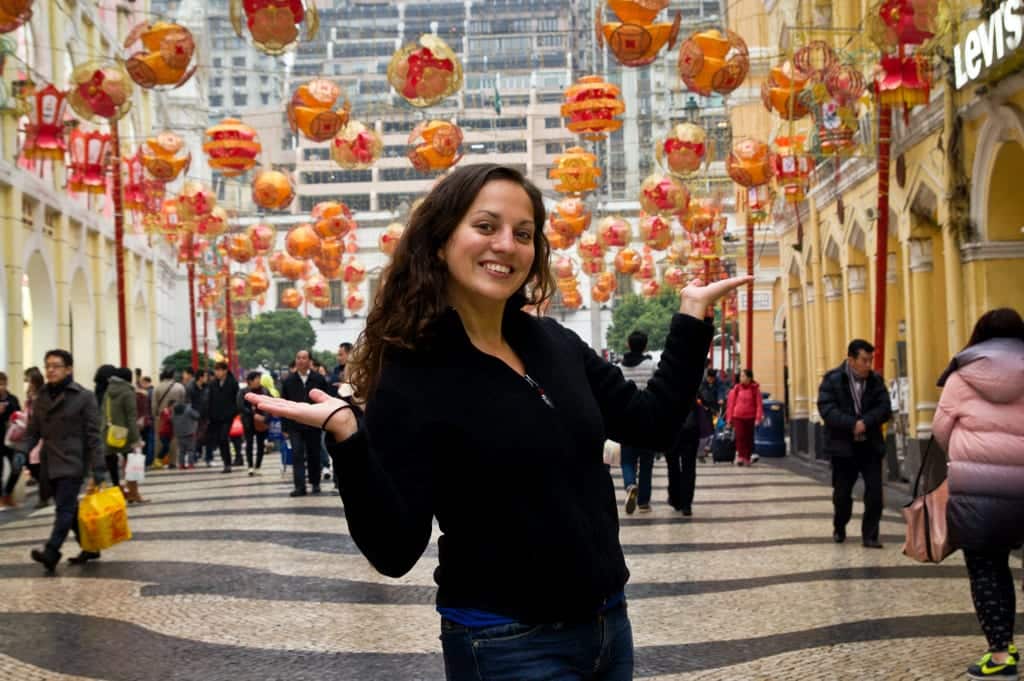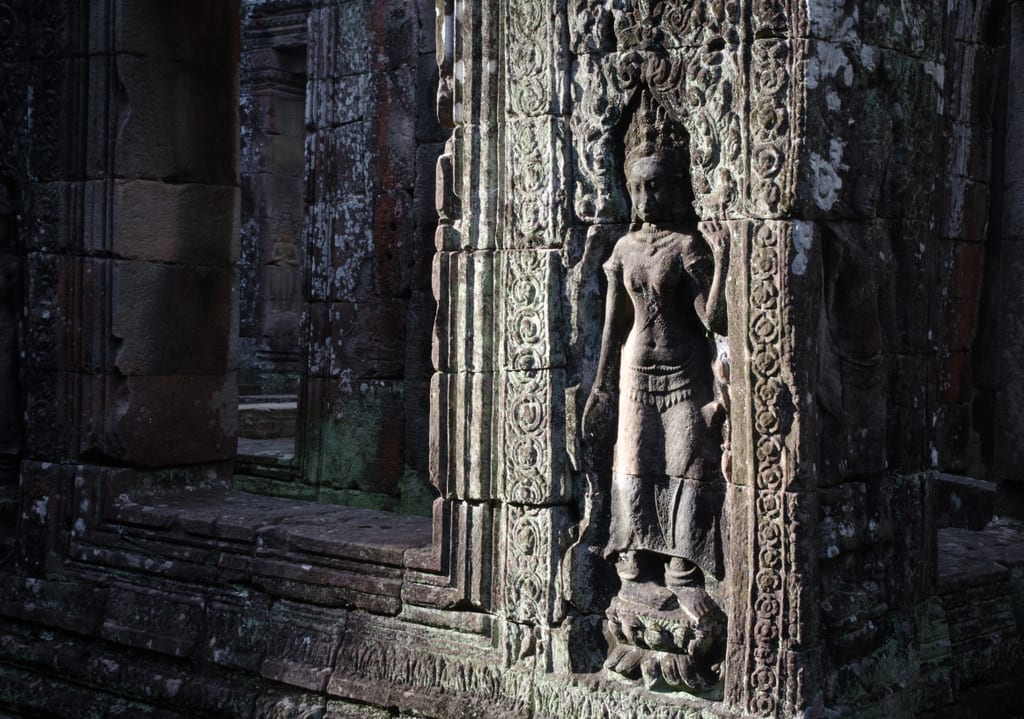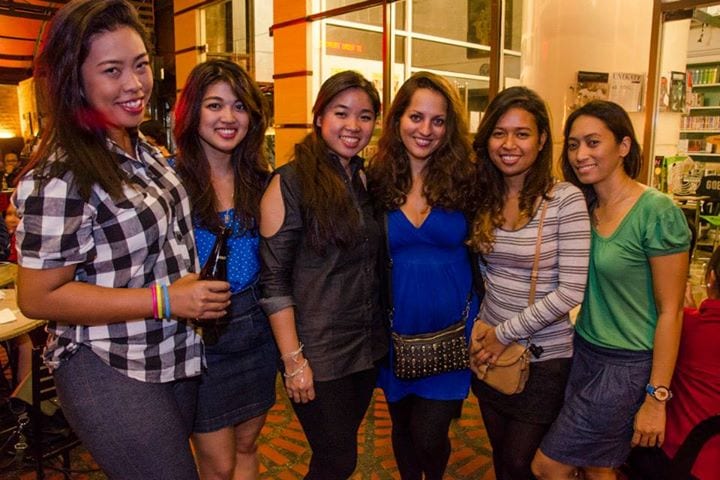Adventurous Kate contains affiliate links. If you make a purchase through these links, I will earn a commission at no extra cost to you. Thanks!
A few days ago, my attention was brought to a piece on Buzzfeed called 29 Things Women Avoid Doing Because We Fear For Our Safety. I haven’t been able to stop thinking about it since. Go ahead, read it and come back here.
In typical Buzzfeed style, the piece was written with the goal of gaining social shares and pageviews, and it seemed to be written controversially for that reason.
Some of the more controversial items on the list that I thought were over the top:
14. Wear a ponytail, because it will make it easier for an attacker to grab our hair.
19. Eat food in public — like ice cream cones — that might attract unwanted male attention.
And obviously:
5. Travel solo, because there are certain places where it’s just not safe to be a woman traveling alone.
(Though, also obviously, there are plenty of places where I wouldn’t travel alone. Like Venezuela or Pakistan or Papua New Guinea. And lots more places where I wouldn’t travel, period, like Syria and Somalia.)
But at the same time, there were items on the list that had me nodding in agreement:
10. Walk home at night without holding our keys out, because you never know when you might need a makeshift weapon.
11. Wear flimsy clothing when we’re out walking by ourselves, because harassers see it as an invitation to bother us.
22. Get into a subway car with just men in it, because we’re afraid something might happen. Instead, we scope out subway cars with other women already in them.
24. Answer the door to unexpected visitors, just in case it’s someone who got into the building randomly, who might be planning to attack.
And this one in particular:
23. Walk around late at night with headphones on and blasting music, because we’re afraid attackers might come up behind us.
That’s exactly how I got mugged in Boston back in 2009.
I’m sure you don’t agree with every point on the list. I don’t think you should. But the point of this list is meant to show that the threat of sexual harassment and/or assault is woven into the fabric of our lives as women. It doesn’t control every aspect of our lives, yet it’s discreetly omnipresent.
Every day of my life, whether I’m at home or on the road, I make dozens of micro-decisions relating to my safety.
I walk home with my keys between my fingers, ready to use them as a weapon if necessary. I check to see if anyone’s hiding in the backseat before I get into my car. I reject drinks offered to me by anyone other than the bartender. I don’t cut through parks after sunset. When I move into a new place, I practice opening the door with my key as quickly as possible and memorizing the angle at which to hold my key, just in case I need to run from someone.
When it comes to guarding myself from harassment or assault, I am on 24/7. There is never any downtime. I didn’t realize that until I read the Buzzfeed piece.
Every now and then, a male traveler I know makes a comment along the lines of, “There’s no difference between travel for women and for men. Men can be attacked; men can be robbed; men can be drugged; men can even be raped. Being a foreigner is more significant than being a woman. If you’re not anywhere like India, if you’re just going to Europe or Southeast Asia or something, there’s no difference at all.”
Bad things can happen to anyone at anytime. Beyond that, though, I disagree with their overall assertion. But I don’t blame them. It’s hard to understand if you haven’t spent the last decade or longer experiencing it firsthand.
Until you’ve spent time scrutinizing your outfit in the mirror and wondering if the length of your skirt, the height of your heels, or the brightness of your red lipstick will result in you getting harassed on the street, no, you don’t know what it’s like.
The problem is that these men are making their observations through the context of travel when they should be looking through the context of life.
And so when I travel, I continue to do what I do at home. I choose not to walk down a dark street in Ljubljana by myself, even though the city center feels safe. I choose to take a cab late at night in Zagreb, even though the hotel is just a few blocks away.
I choose to be purposefully vague when being chatted up by two amiable but slightly drunk guys in Belfast, lest they follow me home. I choose to ask my Airbnb host detailed questions about what I should and shouldn’t do in the neighborhood. I choose to dress conservatively in new destinations, rather than guessing and unknowingly breaching a level that turns into catcalls from men.
Does this sound like living in fear? It’s not. I simply stay aware and make choices that will keep me as safe as possible.
One recent experience was in Cambodia. After experiencing three shockingly crime-filled weeks — although the crimes were anecdotal, they were later corroborated by statements from the Phnom Penh chief prosecutor and UK government about an overall increase in crime in the country — I decided that I was no longer comfortable hiring a private guide to take me to Preah Vihear on my own.
Between remembering a borderline uncomfortable conversation I had had when alone with a motorbike driver back in 2010 and having heard about a friend of a friend who had been nearly raped by another motorbike driver in Phnom Penh just a few weeks before, I didn’t want to put myself in an isolating situation with a local man. (Had it been a tour group, that would have been different, but that wasn’t an option.)
The chances of something happening would have been extremely unlikely. But I still didn’t want to take the risk.
One misconception is that women are only at risk in countries like India that necessitate greater caution, but you’d be surprised at what you’d find in common “safe” destinations.
A few weeks into my semester abroad in Florence nearly a decade ago, it was a scorchingly hot day and I wore the kind of outfit I’d wear on a hot day at home: a short denim skirt and a cream-colored tank top.
In the ten minutes it took to walk from my apartment to the Duomo, I received so much harassment by men in the form of “accidental” gropes, grazing hands, and catcalls, that I turned around, walked home, and changed, never to wear either of those items in Italy ever again.
(You know what’s the worse part of all? If the gropes had escalated into full-blown assault, people would have said, “Well, she shouldn’t have been wearing a short skirt.” News flash: NOBODY deserves to be assaulted. Ever. No matter what they’re wearing.)
This atmosphere is honestly a fact of life while traveling in certain destinations in Italy, especially cities like Florence and Rome that are popular with young foreigners. Even if you dress conservatively, your appearance is part of the conversation in Italy. Men will talk about how you look; some will even touch or grab you. I could always, always tell in advance when I was being sized up by a man down the street, about to be “ciao bella-ed.” It wasn’t uncommon for me to be followed down the street by a group of men, either when alone or with female friends.
I still visit Italy often and I don’t experience as much harassment these days — I believe it’s because I’m older, I know how to blend in better these days, and I now spend most of my time in destinations where fewer tourists visit and thus have a different culture regarding foreigners.
Let’s talk about a very different part of the world: Japan. Japan is one of the safest places I have ever experienced — the kind of place where you could leave your purse on a bench and it wouldn’t be touched — but sexual harassment on public transportation has been enough of an issue that women-only subway cars were introduced nearly a decade ago.
They call it chikan. There is a subset of criminal men who grope, fondle, or rub up against women on the subway for their own sexual enjoyment.
This hasn’t happened to me in Japan — but it has in Boston. Twice. Both times, I froze, too shocked and scared to do anything until we got to the next stop. It’s easy to say that you’d scream, that you’d move, that you’d do anything to get away from him — but until a traumatizing action like this happens to you, you have no idea.
Italy and Japan have their issues. But would I tell women not to visit these countries? Absolutely not. They are both beautiful and fascinating places — two of my top five favorite countries, in fact — and their amazing qualities massively outshine the less savory ones.
What can we do?
With a list like this, it’s a reminder of just how scary the world can be. But that doesn’t mean that we should curl up into a ball and hide away, never to use our passports again. It’s possible to travel safely with conscientious preparation.
We should continue to be responsible travelers who prioritize our safety.
We should research our destinations in depth before we arrive and learn not just what to do, but how to dress and where to avoid. We should ask questions to local women or women who have recently traveled there, and we should find local communities via Couchsurfing or Meetup groups.
We should be hyper-cautious when it comes to our alcohol intake and our trust of strangers.
We should financially invest in our safety, whether that means if that means paying for quality travel gear, purchasing expensive travel insurance, or booking pricey taxis on an already-stretched budget.
We should pay attention to our loved ones’ concerns about our safety and create a plan to stay in touch.
We should always, always listen to our intuition and remove ourselves from situations that feel dangerous.





